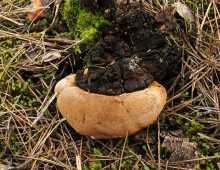Microbial Controls on Carbon Cycling in Freshwater Lakes
The role of lakes in the global carbon budget has previously been underestimated. The total amount of organic matter stored in the sediments of lakes and reservoirs is estimated to exceed that stored in the sediments of the world’s oceans. Freshwater lakes can act as net sources or sinks of atmospheric carbon, and microbes mediate… [Read More]

